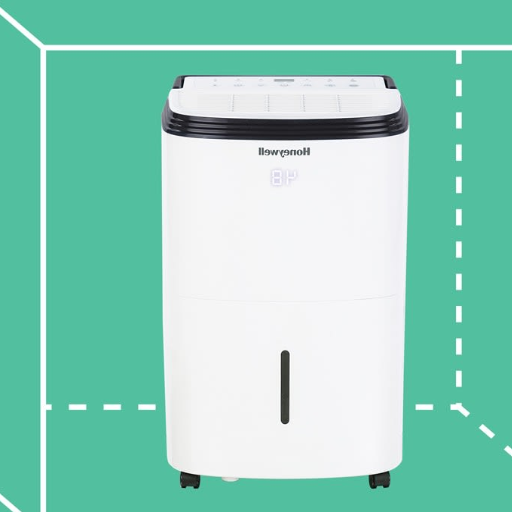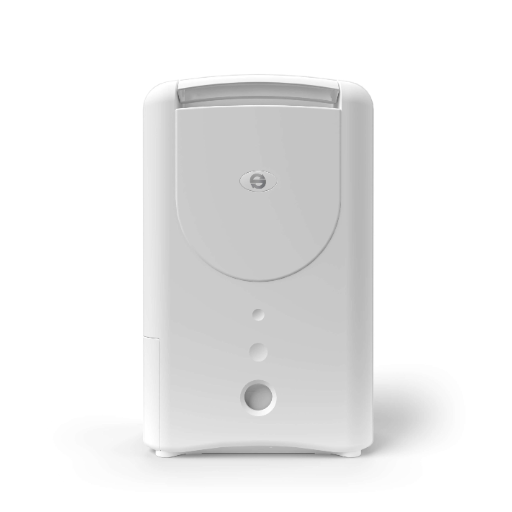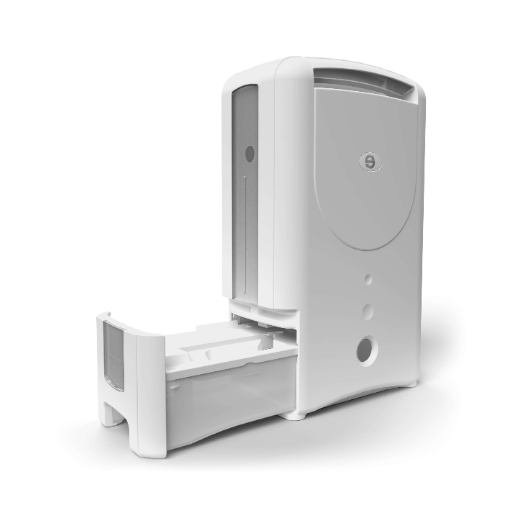Maintaining the right indoor humidity level is crucial for ensuring a comfortable, healthy, and energy-efficient living environment. Too much humidity can lead to issues such as mold growth, dust mites, and structural damage, while insufficient humidity can cause discomfort and even health problems. This article provides a detailed exploration of optimal dehumidifier settings, helping you understand how to strike the perfect balance for your space. Whether you’re dealing with excess moisture during humid seasons or looking to optimize your indoor air quality year-round, we’ll break down everything you need to know to effectively manage humidity levels in your home.
Ideal Humidity Levels for Different Spaces
Living Room Humidity Settings
An ideal humidity, for comfort and air quality, is between 30% and 50% in a living room. Otherwise, the humidity can cause dampness, mold, discomfort, or overly irritating dry air. This balance becomes crucial, especially in living spaces where people spend a considerable amount of time.
During summer, the humidity can rise, creating more moisture in the air. A dehumidifier would ensure that the room stays in the aforementioned range and prevent mold from taking hold, while mildew and dust mites also thrive in the more humid conditions. Now, in the colder months, if dryness sets in, one would find comfort in a humidifier, as air below 30% can cause dry skin, irritation, and static electricity.
Once set up, it would be beneficial to have a hygrometer to keep an eye on your living room’s relative humidity while you make adjustments via a dehumidifier or humidifier. Maintenance of your dehumidifier or humidifier goes a long way toward ensuring these systems remain effective. In short, keeping your living room in the humidity range ideal for protection and comfort will create a healthier and more comfortable environment for your household.
Bedroom Humidity Settings
Humidity control is one of those comfort factors that would nourish health, especially during sleep. The usual range for ideal bedroom relative humidity is 30-50% RH. This range is sufficient to avoid overwhelming dryness in the air, which can irritate one’s skin and nose or even cause respiratory problems. On the other hand, any humidity level beyond 50 will act as a breeding ground for mold, mildew, and dust mites, leading to an onslaught of allergy and asthma symptoms.
To better control humidity in a bedroom, install a hygrometer to track humidity levels constantly. When readings hit below 30%, a good humidifier can put some moisture back into the air, thus making life easier by vanquishing dryness during the colder times. When humidity levels go beyond 50%, dehumidifiers work best at reducing any excess moisture confronting them, particularly if you live in a warmer and humid climate. Additionally, proper ventilation to avoid rapid fluctuation of humidity levels and to allow absorption of moisture can help, such as by opening windows or running exhaust fans.
In addition, good upkeep habits for your humidifier or dehumidifier will help stave off any potential issues from bacterial build-up that might come to affect the air quality. By keeping relative humidity within its designated range in the bedroom, one is making a concerted step toward creating a healthier and comfortable sleep environment that, in turn, contributes to well-being.
Basement Dehumidifier Setting
The recommended dehumidifier setting for a basement should vary according to moisture levels and seasons. The general idea of the setting would typically be to keep relative humidity (RH) in the range of 30% to 50%. This prevents mold from growing and musty odors; more moisture could damage the structure. During the colder months, a higher humidity level of 40% to 50% is preferred, as dry air could become uncomfortable and may crack wood or similar materials.
If your basement has higher-than-average moisture or tends to get water infiltration, then setting the humidity at a relatively low 30% to 40% would provide better results in drying. You should always have a hygrometer by your side, measuring the RH in your basement and helping you decide whether to increase or decrease your dehumidifier’s settings. It is of utmost importance to maintain RH around a certain level and allow fluctuations from variation in weather or people’s use to be all-time low.
For better performance of the dehumidifier, its placement in a clear, open space at the basement core with easy airflow is required. Filters should be cleaned regularly, and to increase efficiency, one ought to follow up with maintenance instructions supplied by the manufacturer. Proper placement and good maintenance combine to ensure the smooth working of a dehumidifier, thus promoting an even healthier and more comfortable environment in your basement.
Factors Influencing Dehumidifier Settings
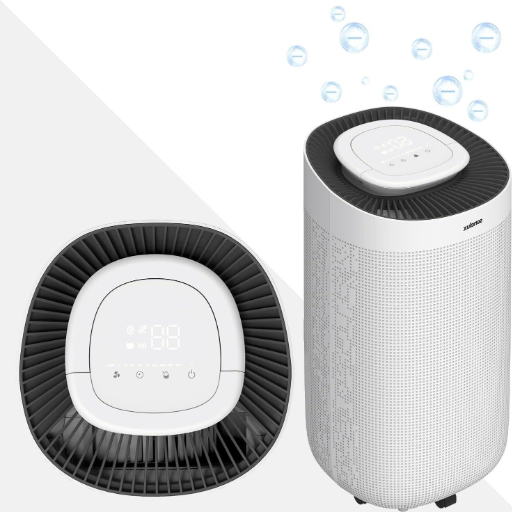
Regional Climate Considerations
Regional climate conditions are important in making decisions about the setting and use of home dehumidifiers. The higher the humidity level in the atmosphere, such as along the coasts or in the tropical regions, the stronger the dehumidifier must run so that the indoor humidity stays within the ideal range of 30% to 50%. The drier or semi-dry the location becomes, the less the operation would be required, as ambient dryness is relatively common.
Performance is also affected by seasonal changes. Humid conditions are often caused by warm temperatures in summer; therefore, the setting and use of the dehumidifier must be high. Rainy conditions cause soaked air and increased moisture within interior spaces, and the Pacific Northwest is one region that faces this challenge strongly.
Precise setting adjustment can be made by knowing the interior humidity levels using a hygrometer. The hygrometer creates a real-time data interface for insertable settings ideally suited for the current climatic conditions. Allowed significance of setting adjustment with regular calibration, aided by response to these, enables the extension of the dehumidifier’s life while ensuring continued perfect air inside.
Seasonal Changes and Humidity
Seasonal changes impact indoor humidity levels as the temperature changes, and there is a variation in the environmental moisture content. In the summer months, warm air holds more moisture, and so there are instances of high humidity levels, which challenge comfort inside and foster mold growth and material degradation. Then again, during winters, the cool air holds very little moisture, and thus, the conditions become much too dry for respiratory health, skin irritations, and structural problems such as wood shrinkage.
If one desires to effectively manage seasonal variations, then these adaptive measures are to be put in place for humidity control. For instance, during high humidity times in summer, the use of dehumidifiers holding relative humidity between 30% and 50% proves best to diminish moisture-related risks. On the other hand, during the winter, humidifiers can be operated in situations where indoor air drops below recommended levels, normally at 30%, thereby achieving a balanced and healthy indoor environment. More advanced humidity control systems integrated with remotely monitored devices can dynamically adjust humidity levels based on real-time data, thus providing an efficient system that guarantees good indoor air quality throughout seasonal changes.
It is crucial to make tall the surface understanding of and considerations for the inter-linkages of climate patterns, temperature changes, and indoor humidity, because such understanding ensures home and work environments. Through periodical monitoring, recalibrations through seasons, and implementation of necessary technologies, one can be guaranteed of sufficient humidity control year-round.
Size of the Area Being Dehumidified
The size of the area being dehumidified affects the choice, installation, and performance of a dehumidification system. Portable units with low capacity (measured in pints of water removal per day) are generally suitable for smaller spaces, such as single rooms or small basement areas under 300 square feet. Spaces larger than 1,000 square feet, including multi-room environments, industrial spaces, or entire floors, need high-capacity or whole-house dehumidifiers for effective moisture control.
The capacity of the dehumidifier should, therefore, not only be determined according to the square footage of the area but also take into consideration the prevailing humidity levels. For instance, a highly humid area, such as in tropical conditions, or a water-damaged property requires greater capacity even for medium-sized rooms. One may refer to the industry standards, like AHAM (Association of Home Appliance Manufacturers) guidelines, when matching the dehumidifier capacity with the size of a room.
Besides, air circulation within a space has to be considered in weighing the efficiency of the system. Locations that are poorly vented, with obstructed airflow, may need either higher-capacity units or additional fans to ensure uniform moisture removal. Considering these together with the spatial properties ensures the best dehumidification, energy efficiency, and comfort in living or operational environments.
Optimizing Dehumidifier Performance
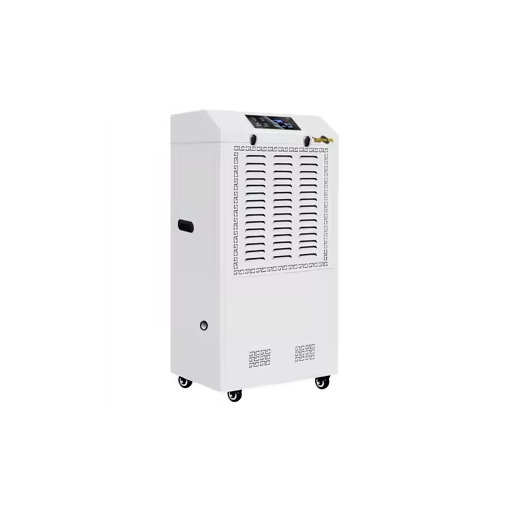
Best Location for Your Dehumidifier
In considering where I want to place the dehumidifier, I locate it where a water problem or moisture problem exists. These areas are usually basements, laundry rooms, or bathrooms due to their being humidity-prone areas by virtue of either poor ventilation or the presence of water sources. Placing the device right at the high-moisture spots will allow targeted treatment of the humidity level from the very source.
Another very important factor I want to ensure is that the dehumidifier has free and unobstructed air flow. Its placement is such that there is at least a 6- to 12-inch clearance from a wall, curtain, or piece of furniture that could potentially block the air intake and exhaust. Furthermore, I am careful about the room layout to allow free air circulation to make sure the dehumidifier works optimally throughout the space. This helps improve moisture removal and saves the dehumidifier from working overtime.
Lastly, I make compromises with ease of accessibility and convenience. For example, the dehumidifier has to be located where I can easily access the water collection reservoir or hook up a drainage hose if it has a continuous drainage option. Selecting a place that is a compromise between functional effectiveness, efficiency in working, and ease of maintenance allows the dehumidifier to do its best while keeping the space comfortable and dry.
Regular Maintenance Tips
Maintenance is vital to the prime upkeep of a dehumidifier. In the pursuit of optimum performance, begin by cleaning the air filter that traps something like dust and particulates. Most dehumidifier models have removable washable filters; however, do always check the manufacturer guidelines as they may instruct you to wash or replace the filter, usually every two to four weeks, depending on usage and environmental factors.
Additionally, one should check and clean the coils and prevent dust from building up to ensure heat transfer and working efficiency of the unit. Use a soft brush or a vacuum cleaner attachment to remove dirt without causing damage. It is also important to keep the reservoir for water collection empty and clean it regularly. When water stands in pools, it can cause bacteria and mold growth, which can potentially affect air quality and device performance. For continuous drainage devices, validate on occasion that the drainage hose is clear and secure to avert any leakage or clogging.
Finally, check the humidity sensor; some sensors may require recalibration with time. With this set of actions combined with preemptive observation of operational issues like abnormal sounds or loss of efficiency, would ensure a steady performance for your dehumidifier, saving you from costly repairs.
Adjusting Settings Based on Humidity Readings
Based on relative humidity readings, proper adjustments ensure a dehumidifier functions at its optimal efficiency and that energy consumption is kept to a minimum. The first step involves establishing the ideal indoor relative humidity for your space. According to general recommendations, this value fluctuates within a range of 30% and 50%, conditioned by the climate and season. Most modern dehumidifiers come with an internal hygrometer that can read humidity in real time. Such readings should be cross-checked intermittently with an independent hygrometer that has been calibrated for accuracy, especially when precise control is needed for sensitive areas such as storage or basements susceptible to mold growth.
With regard to actual measurements of the relative humidity, the dehumidifier should always be adjusted to maintain the desired level of relative humidity inside every room. Whenever such a space is initially highly humid, it is better to set the unit at a lower relative humidity of about 30-40%, so it removes the moisture quickly, and afterwards the relative humidity can be maintained at a higher level of 45-50%. When the units are set to work automatically, it should be ensured that the desired relative humidity value is set as a threshold, so that it would not allow unnecessary cycles or consumption of energy. Also, for places where variable conditions prevail (e.g., temperature changes), the adjustable threshold value of the unit may have to be revisited every now and then, considering the changes in moisture dynamics.
This approach of consistency in monitoring, up-to-date adjustments in settings relative to recorded values, and fine-tuning actual humidity applied benefits in minimizing cost of operation, improving air quality, and extending dehumidifier life; data-accurate adjustments prevent any disproportional dehumidification, which may cause very dry air and other consequent problems like discomfort in respiration or damage to wooden items. This approach marries both efficiency and efficacy for a comfortable and healthy indoor environment.
Common Questions About Dehumidifier Settings
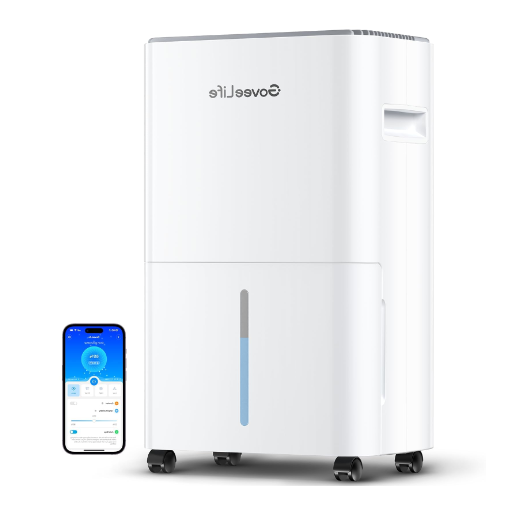
What’s the Best Humidity Level for Mold Prevention?
The best humidity range for the indoors that inhibits mold growth is usually 30%-50%. Mold develops when the humidity is above 60% since those conditions would provide enough moisture for spores to thrive on surfaces such as walls, ceilings, and furniture. If the indoor humidity goes below this level, mold propagation is inhibited, and with it, a decrease in the risk of respiratory problems, structural damage, and foul odors. The very modern dehumidifiers now come paired with built-in hygrometers that allow you to monitor humidity and control it continuously.
Technical factors like room size, insulation, or the outside weather can affect indoor humidity levels. If we take an example, a basement that exposes poor air in and out tends to offer an environment high in humidity and serves as the prime candidate for mold development. A dehumidifier with programmable settings and an auto-drain option can be used to control humidity levels in areas of interest more efficiently. Periodic maintenance of the dehumidifier and checking for leaks or spots of water intrusion into the room are also critical steps to help reduce the potential for excess moisture build-up.
By strictly following these guidelines, one can not only prevent mold but also guarantee the good quality of indoor air. Studies suggest that properly controlled levels of humidity drastically reduce the chances of a dust mite dumpsite for a common allergen to go side-by-side with mold spores. Preventive measures like repair of leaks and enhancement of ventilation should accompany dehumidification for long-term success in optimizing conditions against the colonization of mold.
How Do I Know If My Dehumidifier Is Working Properly?
Some processes require observation, measurement, and routine upkeep to determine whether a dehumidifier is working optimally. The first step is to observe the humidity levels using a digital hygrometer, a specialized device to determine them. General indoor humidity levels must range between 30%-50%. Maintaining that humidity level throughout would indicate that your dehumidifier is working sufficiently.
Observe the water collection of the system. If it is working well, the dehumidifier should be drawing water out of the air at regular intervals, indicated by condensation appearing in the reservoir. If the reservoir is consistently empty while humidity is high, something may be wrong with your device. Also, observe temperature changes and air flow. Fans in your device should run smoothly and not get too hot or too noisy, as such things might hint at mechanical inefficiencies.
Besides, the unimpeded operation of the dehumidifier depends upon the cleanliness of the filters and the coils. Blockage will hinder its efficient operation. Most modern dehumidifiers provide operational indicators or alert systems that inform you when they have to be maintained, whether it be emptying a full tank or cleaning the filter. So, through constant inspection and maintenance on the guidelines provided by the manufacturer, you can keep your dehumidifier working well over time.
What to Do If Your Dehumidifier Isn’t Collecting Water
If your dehumidifier does not seem to collect water, the possible reasons for that are many, and a systematic approach to troubleshooting can assist in identifying the real cause. First, check the ambient conditions to ensure suitability for dehumidifier operation. Most models require the temperature in the room to be above 65°F and the relative humidity to be sufficiently high to be able to extract moisture. Operating your appliance in a colder and drier environment could leave it inefficient or simply unable to collect water.
Next, check the air filter for dirt or clogs. A blocked filter could limit airflow and reduce the efficiency of the unit, and thus reduce its ability to extract moisture from the air. It must be cleaned or replaced regularly in order to maintain efficiency. Also, examine the condenser coils for frost or ice buildup, especially when the unit operates in a cooler environment. Frosted coils could be the result of the defrost mechanism not working properly or the usage of the unit in conditions below its intended operating temperature. Thawing the unit or shifting to a warmer setting could resolve this.
Another possibility is that there is a problem with the compressor or that there is a refrigerant leak. The compressor is a critical part of the cooling cycle wherein condensation occurs; if this component suffers any mechanical problems, it would be unable to remove moisture. Also, in the absence of refrigerant due to a leak, the cycle will be disturbed. These issues may need expert diagnosis and repair.
Finally, make sure the water collection mechanism is working. Whether your unit uses a collection tank or drains directly into a hose, make sure it is not blocked, leaking, or improperly aligned. If it has float sensors or electronic controls, check that these are not damaged or stuck, since they help control the dehumidification activity itself.
Improving Indoor Air Quality and Comfort
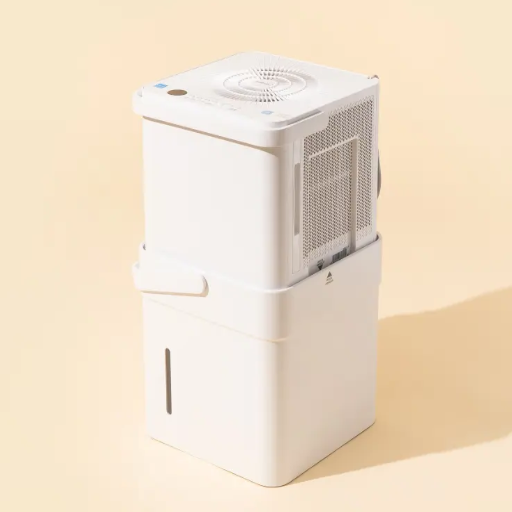
Reducing Allergens and Excess Moisture
The indoor allergen and moisture dynamics necessitate appropriate interventions to be put in place for the environmental factors impacting these conditions and to keep the matter from recurring. Excessive humidity creates the perfect environment for dust mites, molds, and mildew to grow, all of which are common allergens associated with respiratory conditions and allergic reactions. Using a hygrometer to measure humidity levels inside from outside areas provides an excellent method to ascertain the need for intervention to maintain an appropriate environment to live or work in.
High-tech dehumidification systems can be extremely useful in combating these allergens by bringing down the humidity levels. When kept alongside air purifiers, fitted with HEPA filters, the system would be able to trap airborne particulates, such as Pollen and mold spores, that deteriorate air quality. Further, sealing windows tightly and operating exhaust fans where moisture tends to accumulate, like in the kitchen and bathroom, will curb allergen production. For mold-prone areas with frequent exposure to moisture, such as advanced antimicrobial treatments and sealants can be applied as a preventive measure.
Maintaining clause for cleaning clause is essential in reducing allergens and moisture build-up. Cleaning ought to cover the likes of high-touch surfaces, carpets, upholstery, and ventilation systems using allergen-friendly cleaners and a vacuum system fitted with HEPA filters. Fix water leaks, unclog gutters, and ensure proper drainage to reduce sources of humidity. Adequate insulation and the use of vapor barriers will also help to prevent condensation; all these factors, when joined together by strong mechanical means and proper environmental controls, weave a thorough fabric of intervention for the betterment of indoor air and possible reduction of allergens and moisture.
Preventing Water Damage in Your Home
Water damage contributes largely to threatening the structural integrity of residential buildings and their longevity. It can spring from various areas, such as a leak in the plumbing system, roof failure, cracks in the foundation, or purely an act of nature in the form of heavy rainstorms. Track and curb when it comes to anything that stands at risk, e.g., check that all plumbing connections and water supply lines are properly secured against corrosion or any sort of damage. The roof inspection includes missing or damaged shingles, confirming flashing is intact on roofs, and checking the sealing around vents or chimneys.
An ounce of prevention goes a long way toward making sure water will not intrude into your home. Put waterproof sealants around windows, doors, or where other openings occur to decrease the chance of leakage. Basements and lower areas can be protected during heavy storms using storm-proofing, such as installing sump pumps and backflow valves. The ground should be graded around a house to slope away from the foundation to redirect surface water; this stops water from accumulating near the house. To back this up, proper drainage should be installed, such as French drains. Lastly, if you have an older plumbing system in your home, consider replacing the outdated stuff (for example, galvanized steel pipes) with something sturdier, like copper or PEX.
On-site technology can greatly augment the functions that prevent water damage and monitor water damage. These leak detection systems with sensors and shutoff valves can alert a homeowner to a child’s potential leakage and shut off water, minimizing damage. Small integration houses allow for constant monitoring through an application on one’s mobile phone, offering real-time updates and serving as the first warning. This technology, in combination with good maintenance, creates an all-encompassing approach to mitigating the risk of water damage. Being able to afford the best of traditional and advanced means will ultimately guarantee the safeguarding of property against expensive repairs and long-term structural impediments.
The Health Benefits of Proper Humidity Control
Excessive humidity control, in contrast, plays a negative role in the modulation of a healthy indoor atmosphere. This is due to exteriors with drying effects that tend to range from 30% to 50% of relative humidity. For several allergic and health factors, here are five important health benefits that come from proper humidity control:
- Lessening of Respiratory Conditions: Proper humidity protects against common respiratory issues linked with excessive drying or wetness. Because there is a lot of dryness in the air, it causes the airways to become inflamed and dry up. The mucous membranes dry out, thus causing them to develop into asthma and bronchitis. On the other side, mold is favored by excessive humidity, and so are dust mites; these are the most important allergens regarding asthmatic symptoms.
- Healthy Skin: Low humidity imparts an atmosphere that sucks moisture away from human skin, resulting in dryness, itching, and irritation. Proper humidity can keep skin moist, prevent dermatitis or eczema, and nourish existing dry skin.
- Fight against Diseases: Balanced humidity is the biggest enemy for viruses and bacteria, whose survival and propagation depend on it considerably. Researches show that fructifying viruses are more active under lower humidity, thus the probability of infection is increased. It can be largely mitigated by keeping proper humidity so that such viruses cannot propagate.
- Build Comfortable Sleep: Uncomfortable humidity is what disturbs sleep: nasal blockage, sweating. So indoors, proper humidity promotes better airflow and temperature regulation, allowing sleep to become uninterrupted and comfortable.
- Resisting Eye Irritation: A dry environment causes low humidity levels to sting, especially if you are wearing contact lenses. Properly moist air can help hydrate eyes and reduce discomfort in winter or artificial periodontal heated environments.
Focusing on proper humidity control mostly improves human health and well-being, producing more comfort in the living atmosphere.
References
-
Cornell Cooperative Extension: Selecting a Dehumidifier – Guides setting dehumidifiers for personal comfort and household protection.
-
University of Rochester Medical Center: Air Filters, Dehumidifiers, and Humidifiers – Discusses ideal indoor humidity levels (30%-55%) and their impact on health.
-
University of Florida IFAS Extension: Check Indoor Humidity – Offers insights on measuring and maintaining indoor humidity.
-
UC San Diego Health Library: Air Filters, Dehumidifiers, and Humidifiers – Reiterates the importance of maintaining 30%-55% humidity to prevent mold and allergens.
Frequently Asked Questions (FAQ)
Q: What should your dehumidifier be set at for optimal performance?
A: The ideal relative humidity level for most homes is between 30% to 50%. Setting your dehumidifier within this range can help prevent issues like mold growth and dust mites while ensuring comfort in your living space.
Q: How do I determine the current humidity in my home?
A: You can measure the humidity in your home using a hygrometer. This device provides a reading of the relative humidity level, allowing you to adjust your dehumidifier accordingly to achieve your desired humidity.
Q: What is the best dehumidifier setting for a portable dehumidifier?
A: For a portable dehumidifier, the best setting typically falls between 40% to 50% relative humidity. This range effectively removes excess moisture without over-drying the air, making it comfortable to breathe.
Q: How can I learn how to set my dehumidifier correctly?
A: To learn how to set your dehumidifier, refer to the user manual for specific instructions. Generally, you want to adjust the humidity percentage to your preferred level, ensuring it aligns with the ideal relative humidity for your space.
Q: What happens if the humidity in the room rises above 60%?
A: If the humidity in the room rises above 60%, it can lead to high levels of moisture and humidity, which may condense and create an environment conducive to mold and mildew growth. Adjusting your dehumidifier to lower the humidity is advisable.
Q: How often should I run a dehumidifier?
A: The frequency of running a dehumidifier depends on your local climate and the current humidity levels. In humid conditions, running your dehumidifier continuously may be necessary, while in drier climates, it may only need to run occasionally.
Q: What is the maximum amount of water vapor a dehumidifier can collect?
A: The maximum amount of water vapor a dehumidifier can collect varies by model. Many dehumidifiers are designed to remove around 30 to 70 pints of moisture per day, depending on their capacity and the humidity levels in your environment.
Q: How can a dehumidifier help with sinus issues?
A: Using a dehumidifier can help alleviate sinus issues by reducing moisture in the air, which can prevent the growth of mold and dust mites. Maintaining an optimal humidity level can make breathing easier and improve overall air quality.
Q: Should I use a drain hose with my dehumidifier?
A: Yes, using a drain hose with your dehumidifier can make it easy to continuously remove water without needing to empty the tank manually. This is particularly useful for long-term use or in areas with high humidity levels.
Q: Can adjusting the humidity percentage affect my HVAC system?
A: Yes, adjusting the humidity percentage on your dehumidifier can influence your HVAC system’s performance. A properly set dehumidifier can help maintain a comfortable temperature and reduce the workload on your air conditioning, leading to energy savings and improved efficiency.

